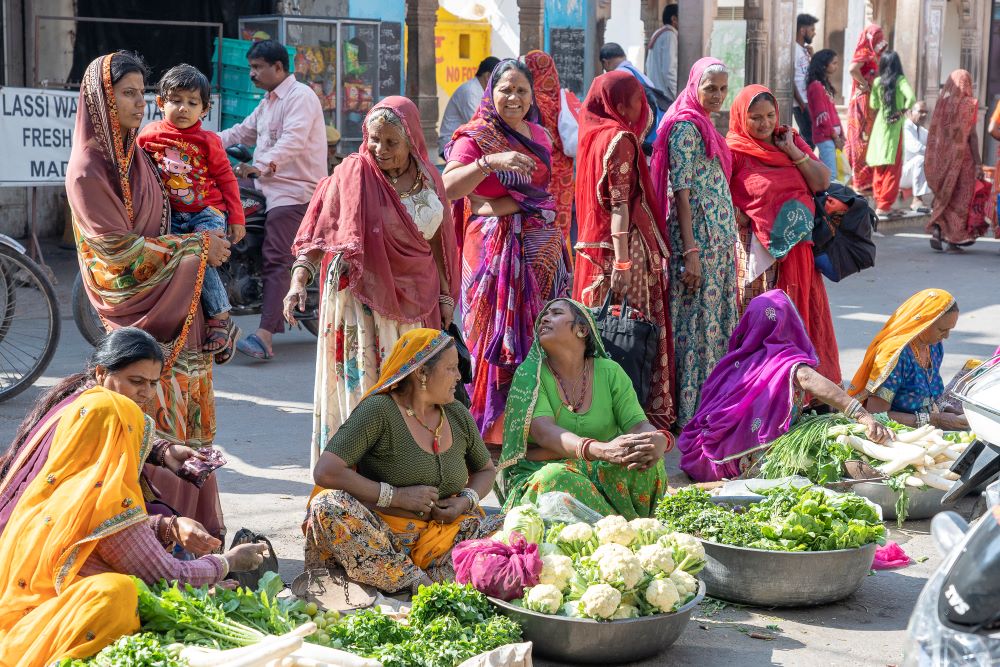If you have not been to India before, it is hard to describe the vibrancy that constitutes Indian fashion. Every crowd is a kaleidoscope of hues. On every outing, one is bombarded with a rainbow of colours in the garments that are worn. Despite globalisation, India has managed to preserve its traditional clothing which is visible everywhere although more prevalent in rural areas.
The saree (also sari or shari) is the most recognisable traditional dress for women. It consists of a drape of cloth that can be from 4.5 to 9 yards in length and 24 to 47 inches wide. It is usually wrapped around the waist, with one end covering one shoulder. There are many different styles of wearing a saree including Nivi, Bengali, Gujarati, Nauvari, Assames, Manipuri and Maharashtrian but in most cases, the saree is worn along with a blouse (choli) and a petticoat (parkar).
The free end is called the saree pallu and is often used to cover the head, particularly by married women and when entering places of worship. They can be made of cotton, silk or synthetic fibres and can be cheap from a few hundred rupees (a few US dollars) to fifty thousand rupees (600 US dollars) or more. Not only is saree cloth usually very colourful, it is also often intricately embroidered. The detail as well as the use of gold and silver thread can significantly add to the cost of material.
There are many other types of dress for women including the mekhela sador, salwar kameez, churidar, anarkali suit and lehenga choli.

For men, there are also traditional ways of dressing. The dhoti is the attire often worn in villages and consists of four to six feet of cotton cloth wrapped around the waist. Shirts are usually worn over this. An anchkan or sherwani is a long jacket that usually has exposed buttons through the length of the jacket. The length is below the knees, with the sherwani slightly longer, and it usually has a Nehru collar that stands up. It can be paired with trousers called churidars that are loose around the hips and the thighs, but tight around the ankle. It is the traditional dress worn by grooms.
A bandhgala (also known as jodhpuri) is a formal evening suit worn by Indian men and may have a vest. It originated in the Jodhpur State and became extremely popular especially under the British Raj. It was a way to put together a western cut with Indian hand-embroidery. The material can be silk, plain or jacquard, and normally the colour of the trousers matches that of the coat.
Pagri is the term used to indicate the turbans which originated in the Indian subcontinent. There are various types of turban, and wearing one is a way to indicate one’s social, religious, and caste status. One of the best known types of turban is the dastar, worn by Sikhs to represent honour, self-respect, courage, spirituality, and piety however continuous use often causes traction alopecia. A pheta is the turban worn in the Maharashtra region, especially during weddings whilst, in Rajasthan, men wear a pagari. In the desert, the turbans are large and loose.
During the various cultural events at the 31st World Congress you will see a wide representation of what is worn in India and a spectacular fashion show is planned for the Bollywood Blast gala.
Don’t leave India without purchasing a garment!
All the best,
Gregory Williams, MBBS, FISHRS
2023 Program Chair
I am interested to purchase garments ,please send the details